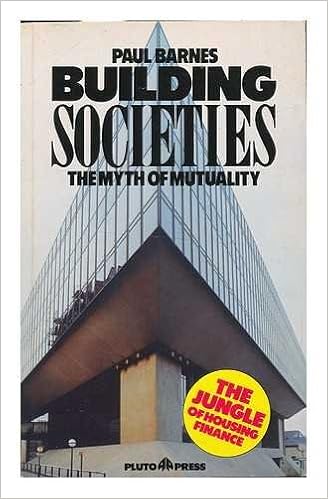Mutual means for the common good.
Mutual societies were intended to be for the good of the members. As the members were also the owners, there was no need for profit. The only need was to achieve the objectives of the society, which in the case of building societies, was to provide houses for people who did not have the ready money to buy them.
Building societies were, originally, genuinely mutual societies and began to be set up during the 18th century. The original ones were temporary or terminating societies, meaning that they were wound up when all members had succeeded in their purpose of building or buying a house with the money the society had lent them. Permanent societies came later and were, until recently, the main source of loans for house buying.
At the beginning of the 20th century there were over 2,200 building societies. Many were temporary societies but many, particularly since the end of World War 2, have disappeared by being swallowed up by other societies. Eleven societies have disappeared through conversion to banks. There are now 43.
In theory building societies should almost always give more beneficial savings and mortgage rates than banks as they have no external shareholders to pay dividends to and should, therefore, operate on a smaller interest margin i.e. the difference between their mortgage rates and their savings rate. In reality banks appear more frequently among the top performers, particularly on savings rates, than do building societies.
In theory societies are owned by their members. In reality directors seek to limit members’ rights to the annual vote only and even then they distort the documents so that members will vote in accordance with directors’ requirements. So, in effect, societies are owned by the directors.
In theory building societies do not need to make excessive profits. In reality they do and directors may receive a bonus based mainly on profits. In theory directors’ bonuses may also be based partly on member satisfaction. In reality there are very many dissatisfied members but the big bonuses still get paid.
In theory the purpose of non-executive directors is to act as independent monitors of management, to have a thorough knowledge of how the society is being run and to represent the interests of members. In reality it is just another big pay cheque and another directorship to be added to their cv.
Many building societies have branched out into a variety of different financial activities to increase the salaries and bonuses of directors. As a result members are treated as sources of profit rather than targets for benefit. Increasing profits has thus resulted in many undesirable schemes and methods that relieve members of their money.
Changes to building society regulations (Building Societies Act (Management) introduced by Helen Liddell and Melanie Johnson (both ex-Treasury Secretaries) to make it more difficult for carpetbaggers have been partly successful in protecting the remaining societies but at the price of making directors less democratic and less accountable to their membership. The changes failed to target directors who were responsible for all demutualisations.
Further Information
The Building Societies Yearbook, produced by the Building Societies Association and Council of Mortgage Lenders, is an invaluable source of current, historical and nostalgic information on individual building societies and the business of building societies. It is available in the reference section at most public libraries.
Building Societies – The Myth of Mutuality by Paul Barnes (Available at Amazon – includes the story of the origins of the BSMA)

www.bsma.org.uk
